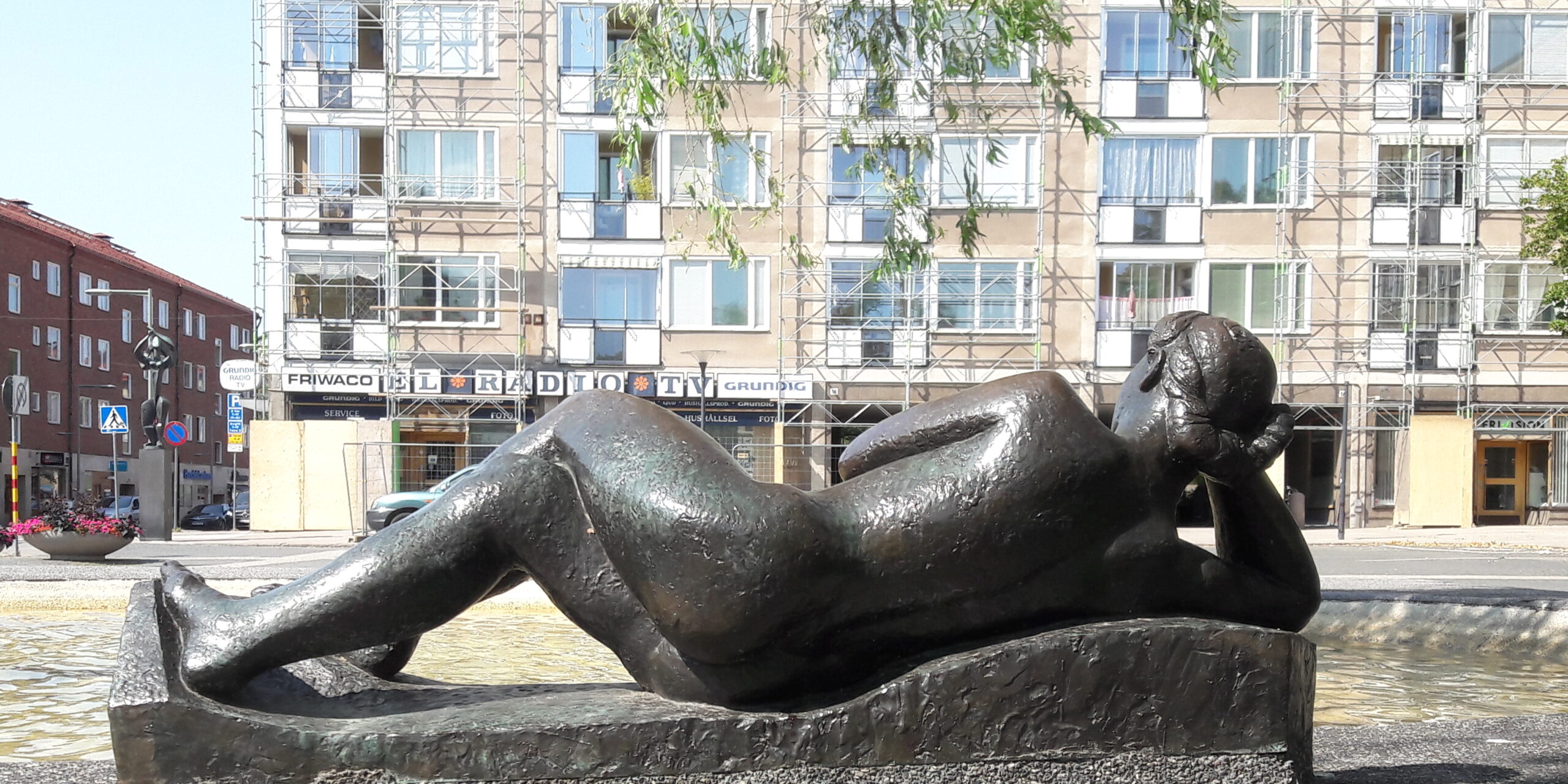Sweden isn’t all cute towns and beautiful landscapes, dear reader. Nor is it just a series of cute red wooden houses. On the contrary, sometimes Sweden looks like the former Soviet Bloc. In this blog entry we wave goodbye to romantic Sweden and say Hello to Stockholm’s ugly side!
Many of Stockholm’s architectural eyesores date back to the 60s and 70s when a virus by the name of rivningshysteri (demoltion mania) was running rampant. Old buildings were torn down and replaced with blocky concrete constructions. Looking at the results, you’d be forgiven for suspecting Soviet agents had infiltrated Swedish city planning.
A few examples:
.

SVT-Building, Oxenstiernsgatan 26, Östermalm
Looking at the building of the public television station SVT (Sveriges Television) makes me wonder if they actually have colour TV in Sweden or whether they are still broadcasting in various shades of grey. The building which serves as an office block was completed in 1973.
.
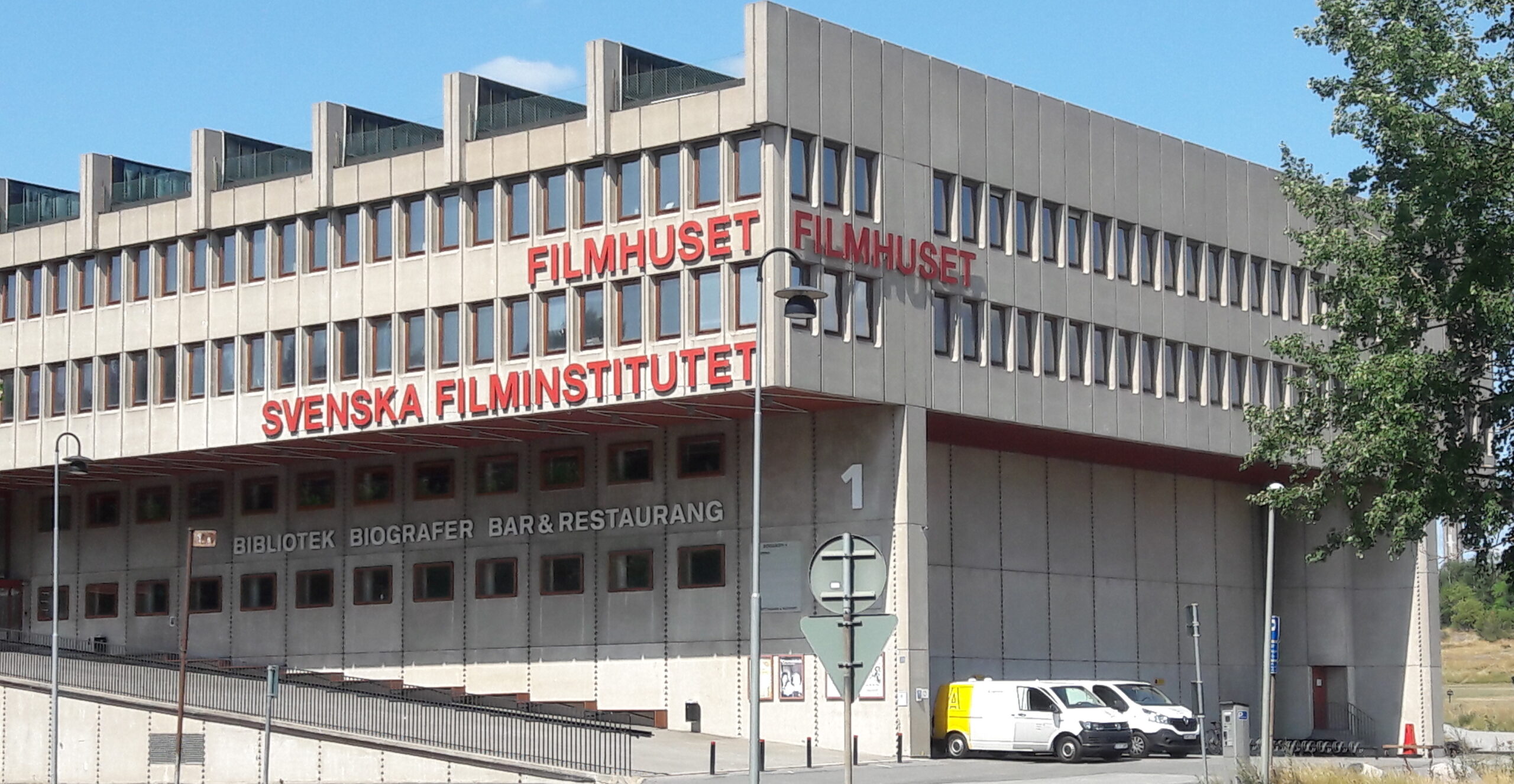
Svenska Filminstitutet, Borgvägen 1, Östermalm
This building, which was taken over by the Swedish Film Institute in 1971, is a good example of a style called Brutalism. Obviously, you’ll have noticed straight away that the building is designed to resemble a film camera. The idea they were trying to achieve seems to be: what’s important is not what the camera looks like on the outside, but rather what it captures (on film) on the inside.
Well if that’s not it, one wonders what they were thinking!
.
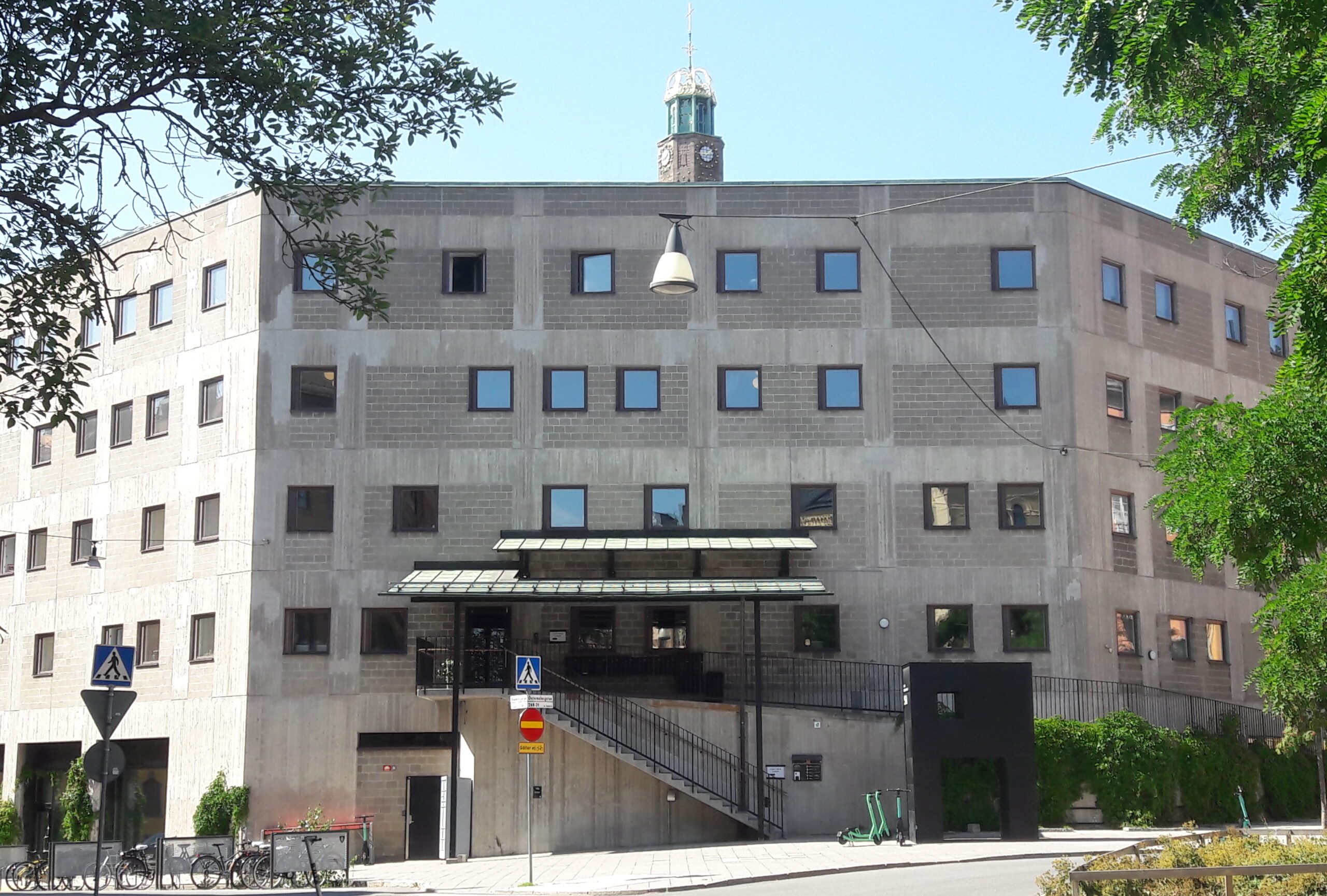
Arkitekturhögskolan, Danderydsplan, Östermalm
Another brutalist concrete block, built at the end of the ’60s. This was the former site of a prison that actually looked like a palace. Which was then replaced by a school of architecture that does look like a prison. (Got that? Ok, great!) The school has now moved on to a different location; in future, the remaining property is intended to serve as a “creative meeting place”. Though, if you ask me, a better idea would be to turn the interior into a ghost train and leave the outside to graffiti sprayers. But maybe that’s just me.
.
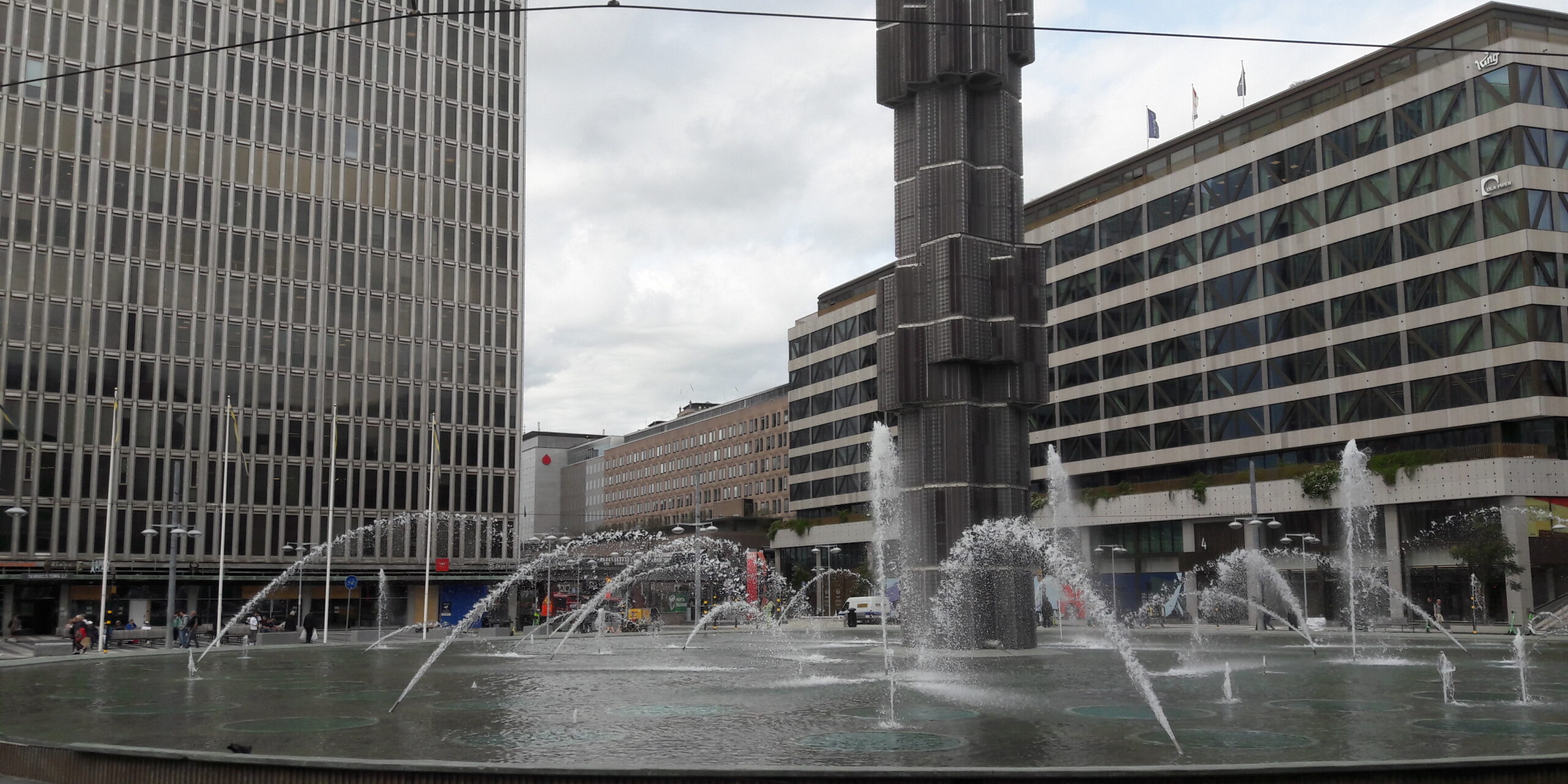
Sergels torg, Norrmalm
Sergels torg is a drab, grey-coloured square in central Stockholm which was built in the 1960s. Thanks to the lack of greenery, even in summer it’s not hard to imagine how this square might look in winter.
.
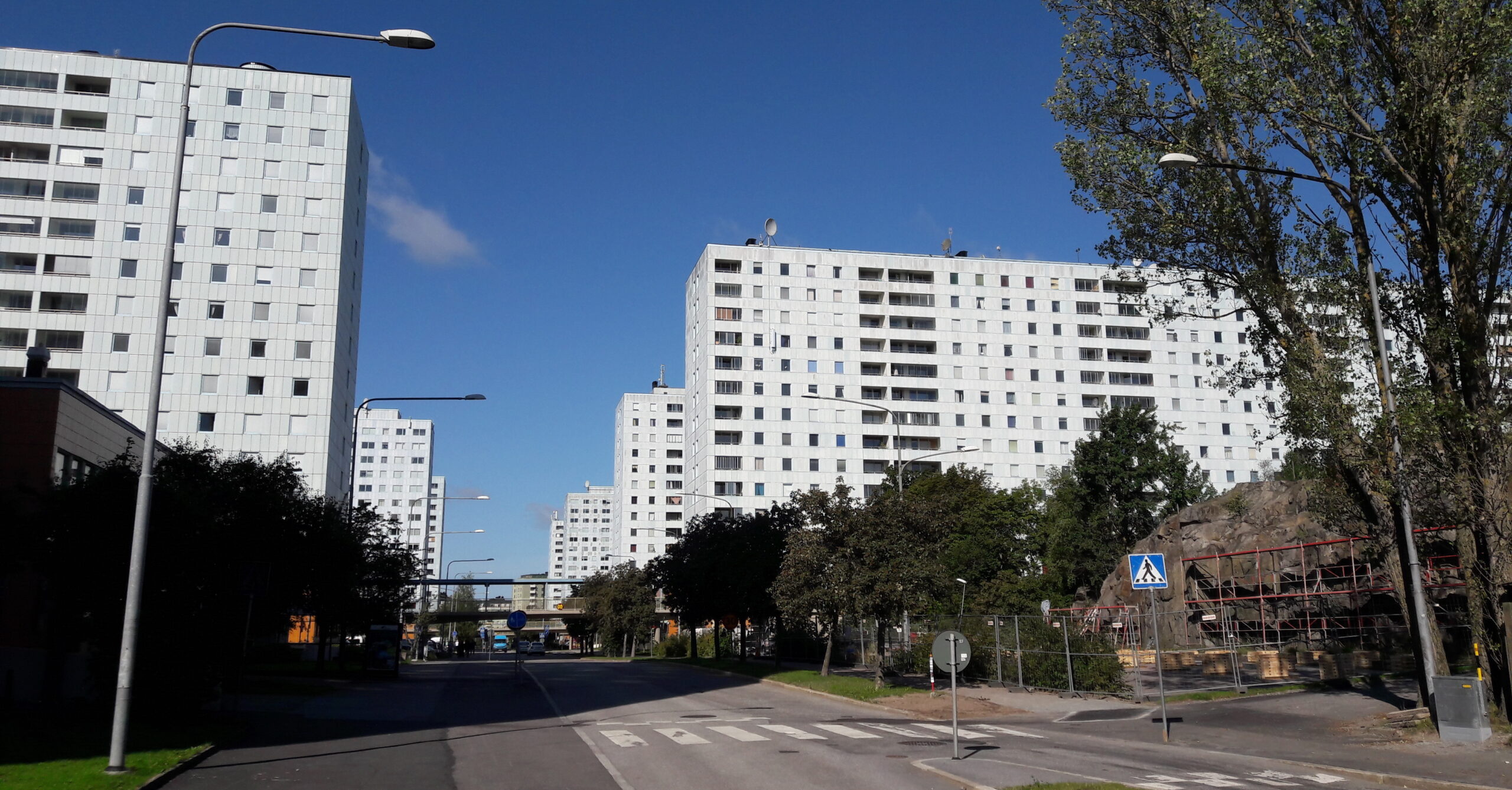
Hagalundsgatan, Solna
A street full of prefrabicated buildings built in 1973. This neighbourhood looks just like East Berlin – so much so that I fully expect Erich Honecker, the General Secretary of the Socialist Unity Party, to come walking around the corner at any moment.
.
Want to see more?
If you’ve fallen in love with Stockholm’s ugly side and feel like more, then I recommend visiting the Arkitekturupproret website. Here you can find further examples of urban mutations, including before and after pictures with suggestions on how the buildings can be improved. The text is in Swedish but the photos speak for themselves.
Or prefer something else?
If you’ve already had enough of Stockolm’s ugly side and prefer to get back to the more beautiful side of the Swedish capital, then I recommend joining one of my guided tours.
